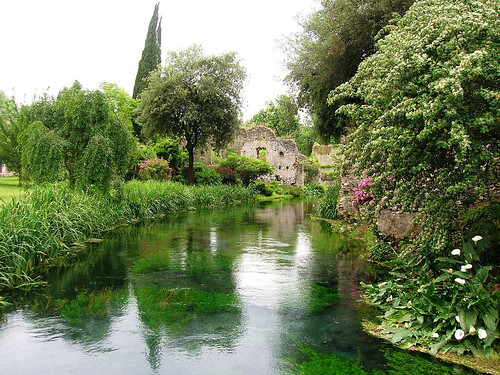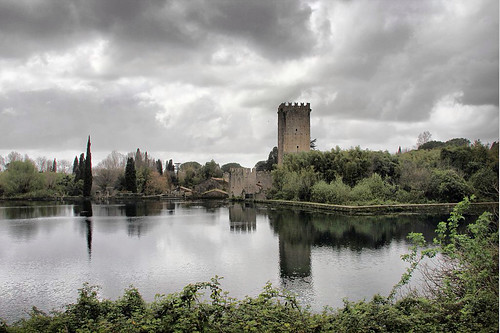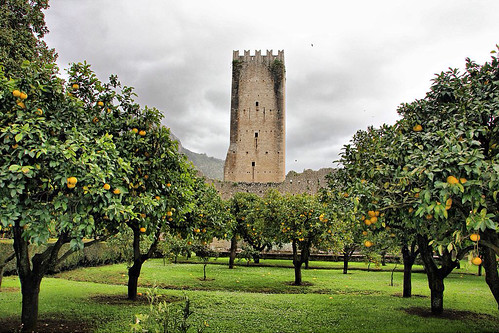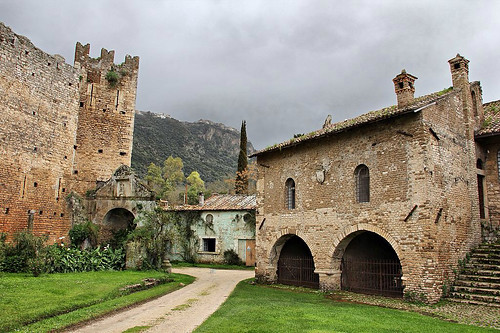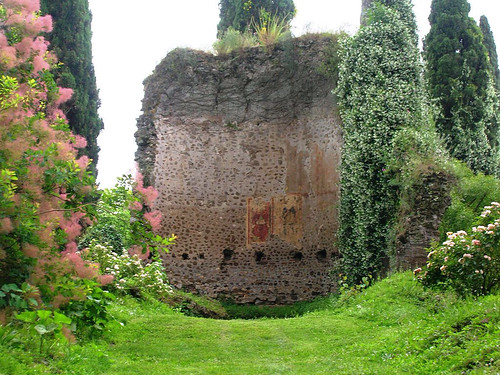My parents visited these gardens a few years ago and had told me how beautiful they were. I managed to go there this summer to see them for myself - and they were right, they are stunning. The best time to visit is in the Spring when all the flowers are out in bloom.
The gardens of Ninfa are set among the ruins of a mediaeval village. It is named after the river which flows through the village. This name also probably has links to Roman times and links to the pagan belief of nymphs living in or around the river. Ninfa was a well-known place in Roman times where people came to stay while travelling along the nearby Via Appia. Around the year 1000 AD it was under Papal control and got drawn into conflicts between the Papal States and the Empire, when it was sacked by Imperial forces. The Frangipane family were in control of it initially and then the Caetani family, who still own the land today. In a local war the village was destroyed in 1382 AD and the population moved to Sermoneta and Norma, two nearby towns. By the middle of the 15th century the village was deserted. There were attempts to repopulate the village during the 18th century, but these failed due to the threat of malaria in the region.
Gelasio Caetani decided to turn the area into gardens based on the 'English style' in the early 1900s. This 'English style' means that the gardens are not manicured, but the plants are managed and left to grow creating a natural effect. There are a range of plants from around the world that thrive here. Banana trees, eucalyptus trees, ferns, bamboo etc. The area of Ninfa is said to have a climate that benefits all these plants which grow side by side among the ruins.
The gardens of Nifa are extensive - 1852 hectares - currently looked after by the Caetani Foundation and the WWF.
Visit the website to look for more information of how to get there and opening times www.fondazionecaetani.org/index.php? The gardens are not open often. All visits are with a guide, and all guides are in Italian. You can still tag along even if you don't speak Italian and enjoy the gardens all the same!
